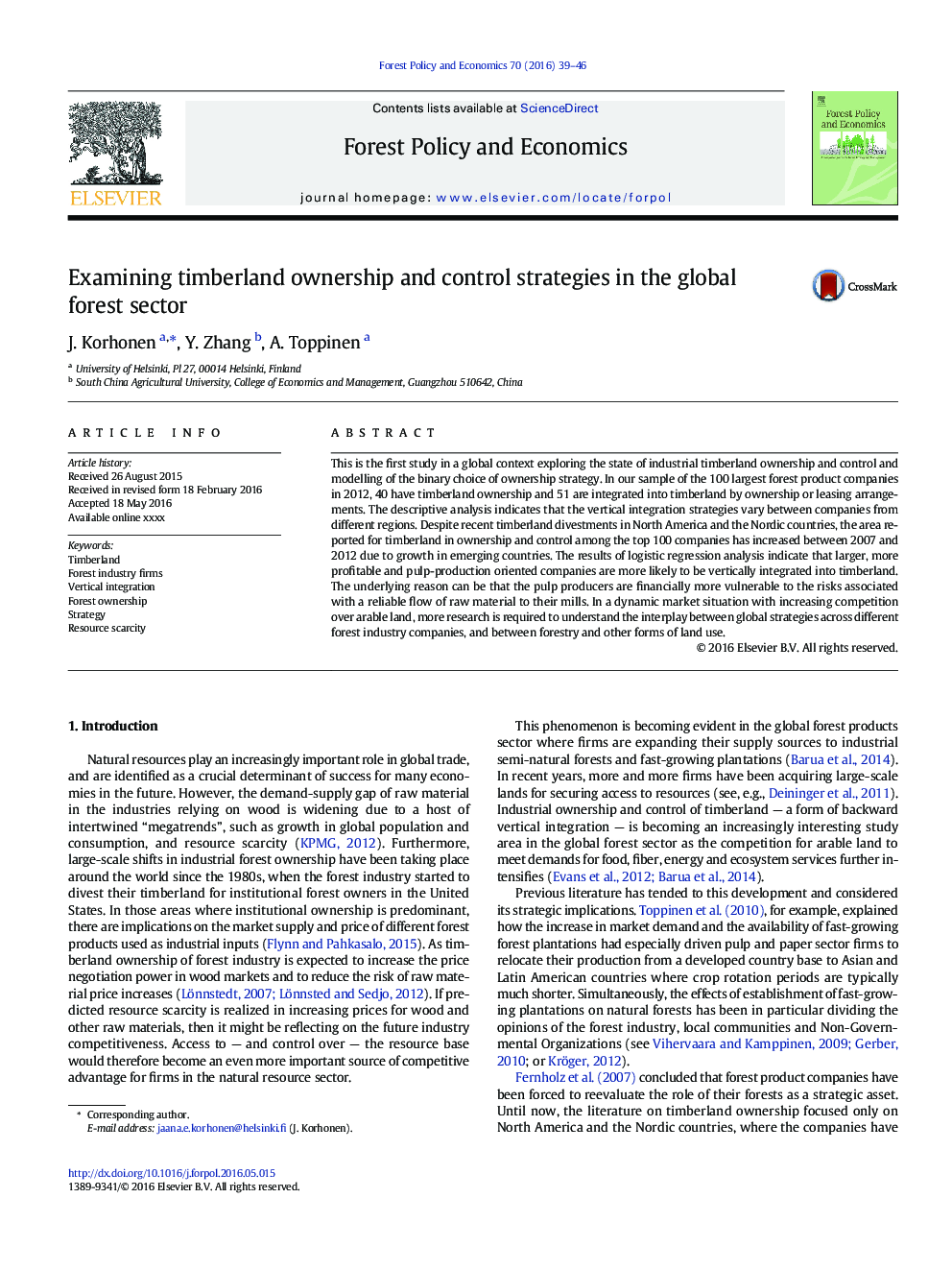| Article ID | Journal | Published Year | Pages | File Type |
|---|---|---|---|---|
| 6544862 | Forest Policy and Economics | 2016 | 8 Pages |
Abstract
This is the first study in a global context exploring the state of industrial timberland ownership and control and modelling of the binary choice of ownership strategy. In our sample of the 100 largest forest product companies in 2012, 40 have timberland ownership and 51 are integrated into timberland by ownership or leasing arrangements. The descriptive analysis indicates that the vertical integration strategies vary between companies from different regions. Despite recent timberland divestments in North America and the Nordic countries, the area reported for timberland in ownership and control among the top 100 companies has increased between 2007 and 2012 due to growth in emerging countries. The results of logistic regression analysis indicate that larger, more profitable and pulp-production oriented companies are more likely to be vertically integrated into timberland. The underlying reason can be that the pulp producers are financially more vulnerable to the risks associated with a reliable flow of raw material to their mills. In a dynamic market situation with increasing competition over arable land, more research is required to understand the interplay between global strategies across different forest industry companies, and between forestry and other forms of land use.
Related Topics
Life Sciences
Agricultural and Biological Sciences
Forestry
Authors
J. Korhonen, Y. Zhang, A. Toppinen,
